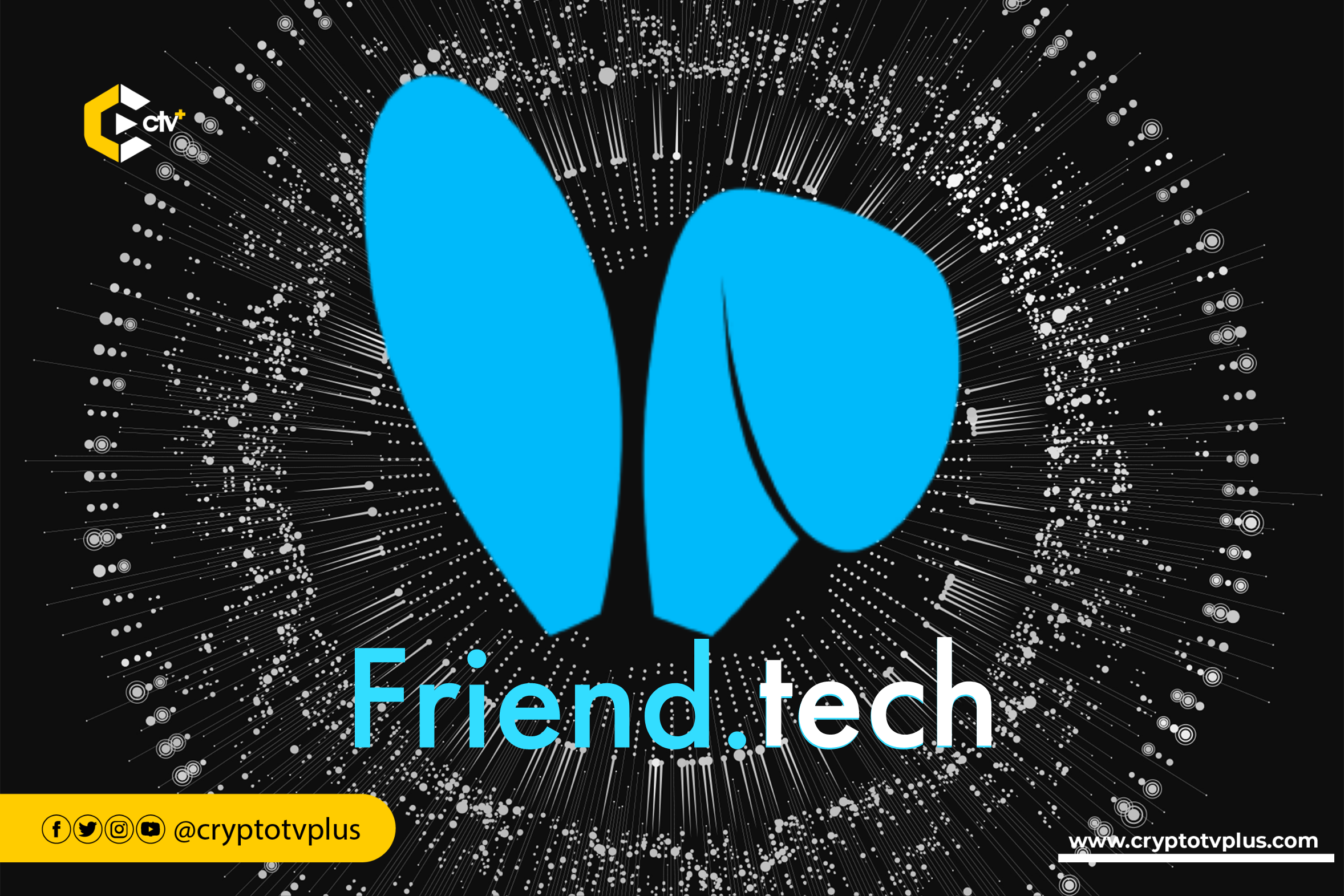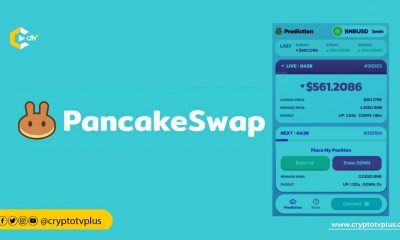SocialFi
A deep dive into friend.tech

If there’s anything to know about the crypto space, it would be that it is a world where information is both highly sought and valued. Information is alpha. And it is within this narrative that friend.tech emerges.
What is Friend.tech?
Friend.tech is a decentralized social media platform that wants to redefine how we engage with content, interact with influencers, and gauge the worth of insights. Friend.tech attracts crypto enthusiasts seeking engagement with Crypto Twitter figures. Beyond a mere social platform, friend.tech is a paradigm shift, a high-signal information aggregator fueled by the discerning judgments of its participants.
In the background, there’s a mysterious individual known as Racer, believed to be the mastermind orchestrating all of this. Racer has also been behind other networks like TweetDAO and Stealcam, leveraging sophisticated digital technologies.
The reminiscence of an old project, BitClout, comes to mind when thinking about friend.tech. Back in 2021, BitClout garnered significant attention initially, but eventually, negative sentiments spread due to a lack of transparency, leading to a decline in its popularity.
The concepts underpinning BitClout and friend.tech share striking similarities. One notable distinction, however, lies in the issue of transparency. Unlike BitClout, friend.tech doesn’t suffer from this problem. Every transaction within friend.tech is recorded on the blockchain, leaving no room for concealment.
Another thing that sets friend.tech apart is its objective quantification through market dynamics.
The individual share prices within the platform stand as a barometer, reflecting each user’s value based on the quality of their contributions. Whether it’s original content creation, trading strategies shared, airdrops unearthed, or meticulously curated information within private chats, every interaction translates to tangible value, concretely embodied in share prices.
How does the share mechanism operate?
Imagine these shares as digital assets akin to any other; they’re susceptible to the oscillations of the market. For instance, if you secure shares of another user at $20 per share, and the base value then soars to $120, you possess the option to sell those shares at the updated base value, raking in profits. Conversely, if the base value dips below your purchase value, let’s say $8, then you find yourself in a position of loss.
The pricing architecture is where the intrigue deepens. In place of a fixed rate, the cost for the subsequent share of an individual is determined via a quadratic bonding curve rooted in their current share count. Hence, the main thing that changes the price is how many of these shares are available.
The price of each share depends only on the number of shares already out there. When there are more shares, the price of each share in ETH goes higher.
Price in ETH = (number of shares)^2 / 16000
While selling/buying, you should also note slippage and fees.
When you buy or sell shares, there’s a price difference. For example, if we say Cobie has 200 shares out there, each share you buy would cost you 2.5 ETH (the current price of Cobie’s shares). But if you try to sell your Cobie shares when there are 200 shares already, you’d only get 2.47 ETH for each share.
The selling price is actually the buying price minus what you want to sell it for (like the buying price for the 199th share). So, the seller would lose 0.03 ETH because of this difference.
When there aren’t many shares out there, this difference as a percentage of the selling price is quite big. So, if you buy shares from someone who has just 1 or 2 shares and quickly sell them, you might end up losing a good part of your money.
So, the best time to sell would be when the number of shares in circulation is relatively high. This would minimize the slippage and price difference between buying and selling, reducing the potential loss and maximizing your profit.
Fee structure and User stat
Friend.tech’s remarkable technological twist comes to the fore through its foundation on Coinbase’s new tech; Base. At the heart of its financial framework lies a distinctive fee structure that amplifies both user incentives and platform growth. The platform thrives on a 10% fee levied on transaction volumes, of which 5% is thoughtfully directed to the individual owning the friend share.
To illustrate, if someone acquires 1 Cobie share for 2 ETH, Cobie would receive 0.1 ETH (2 ETH * 0.05) from this transaction, while the remaining 5% contributes to the friend.tech treasury.
Drawing insights from data sourced from the Base chain on Duneanalytics, the friend.tech treasury has already amassed an impressive 1984 ETH (~$3.4m).
The economic narrative extends further as we delve into the protocol statistics.
As of today, friend.tech boasts a cumulative ETH volume of 21,477 ETH, fostered a community of over 100k users, and facilitated close to 1.9m transactions. This resulted in total fees reaching 378 ETH, out of which 189.1 ETH found its way to the protocol, and an equal amount was distributed.
The foundation of friend.tech’s growth, intriguingly, can be traced back to a simple action – the “buy share” function that comes at zero cost. Every time a user mints their own share, the platform gains a new member. The last four days alone have witnessed an impressive upswing, with user numbers soaring by ~120%.
This surge in users was significantly fueled by the platform’s X (Twitter) presence.
When you invest in someone’s account on friend.tech, the rewards transcend financial gain; they unlock a private realm where ideas, insights, and strategies flow freely. The native bonding curve system fosters a dynamic market where share prices fluctuate based on trading activity, a testament to the platform’s adaptability.
Notably, on a single day, August 19, friend.tech achieved a staggering milestone – amassing over $1 million in charges. This amount surpasses the earnings of some major players in the field like Uniswap and Bitcoin. The core mechanism behind this success is the platform’s modest 5% fee coupled with its capacity to capitalize on each social connection trade. This infusion of financial energy contributes directly to the share owner’s earnings.
Critic?
Friend.tech’s current approach centers exclusively around trading fees, without involving additional stakeholders or shareholders. Certain provocative individuals might exploit this setup to generate higher profits. This could involve using strategies such as spreading fear, uncertainty, and doubt (FUD) to manipulate the situation and increase fees.
Lux Moreau, the founder of Talk.Markets also raised awareness regarding the substantial price increases experienced by shares as they are traded on Friend.tech.
This phenomenon could potentially create incentives for smaller interest groups to form within the platform or even lead to the emergence of alternative sub-groups.
In essence, there really is some potential for certain actors to manipulate the trading dynamics on Friend.tech for financial gain, as well as the impact of trading behaviour on the platform’s community structure.
Airdrop Alpha?
The friend.tech team has decided to reward app testers with airdropped reward points in the upcoming six months before the platform’s official launch.
I’ll leave it to you to draw your own conclusions about the implications this holds for the future. However, given this situation, now might be an opportune time to start exploring the app and familiarize yourself with its technology stack. Curiosity tends to be rewarded in the world of cryptocurrency, after all.
How to get started?
Getting started on friend.tech is easy.
- You begin by signing up on the friend.tech website. After that, you would need to add the app to their home screen, which helps avoid the extra fees that app stores usually charge. Signing up can be done using a phone number, Gmail account, or through Apple because it provides some added privacy using their email privacy relay.
- Next, you will be requested to link your Twitter account, which serves as a way to verify your identity.
- friend.tech will then assign you a unique deposit address on the BASE network.
- To begin using the platform, you will need to deposit a minimum of 0.01 ETH into your account.
- Once you’ve funded your account with ETH, you will gain full access to the platform.
Upon entering the app, you will be given a complimentary chance to purchase your own friend shares. When you buy a stake in another person’s account on friend.tech, you automatically receive access to a private chatroom with the account’s owner and their other stakeholders.
Conclusion
The brilliance of friend.tech lies not only in its valuation mechanism but also in its ability to distill insights from the cacophony of platforms. This curated approach, however, leaves room for a democratic evaluation.
A hallmark of friend.tech’s accessibility is its seamless integration with X (Twitter), which spans the spectrum from seasoned crypto connoisseurs to newcomers. The ingenious deployment as a Safari-based mobile app bypasses the gatekeepers of centralized app stores, ensuring frictionless access for all.
So, what’s the secret sauce that sets friend.tech apart from other social tokens?
It’s the stack! The intricate amalgamation of innovative components. Leveraging Layer 2 technology, embracing the concept of progressive web apps, embedding wallets for seamless initiation – these facets create a synergy that marks friend.tech as a groundbreaking fusion.
The potential ripples extend far and wide. As friend.tech integrates a reward mechanism into its fabric, it morphs into a bastion of meritocracy. Here, crypto enthusiasts dedicated to research and valuable insights find a receptive audience of paying subscribers, creating a level playing field where authentic content trumps mere popularity contests.
However, this application is still in its embryonic stages, and not every operational aspect is elucidated. Our intention doesn’t sway towards advocating for its usage; rather, it’s to accentuate the remarkable swift progression and the surge in its user base.
Eventually, the market, and potentially future algorithms, hold the final verdict on what truly holds value, as echoed in the ebbs and flows of share prices.
Read also: Rarible embraces royalties fully, ends NFT aggregation




















